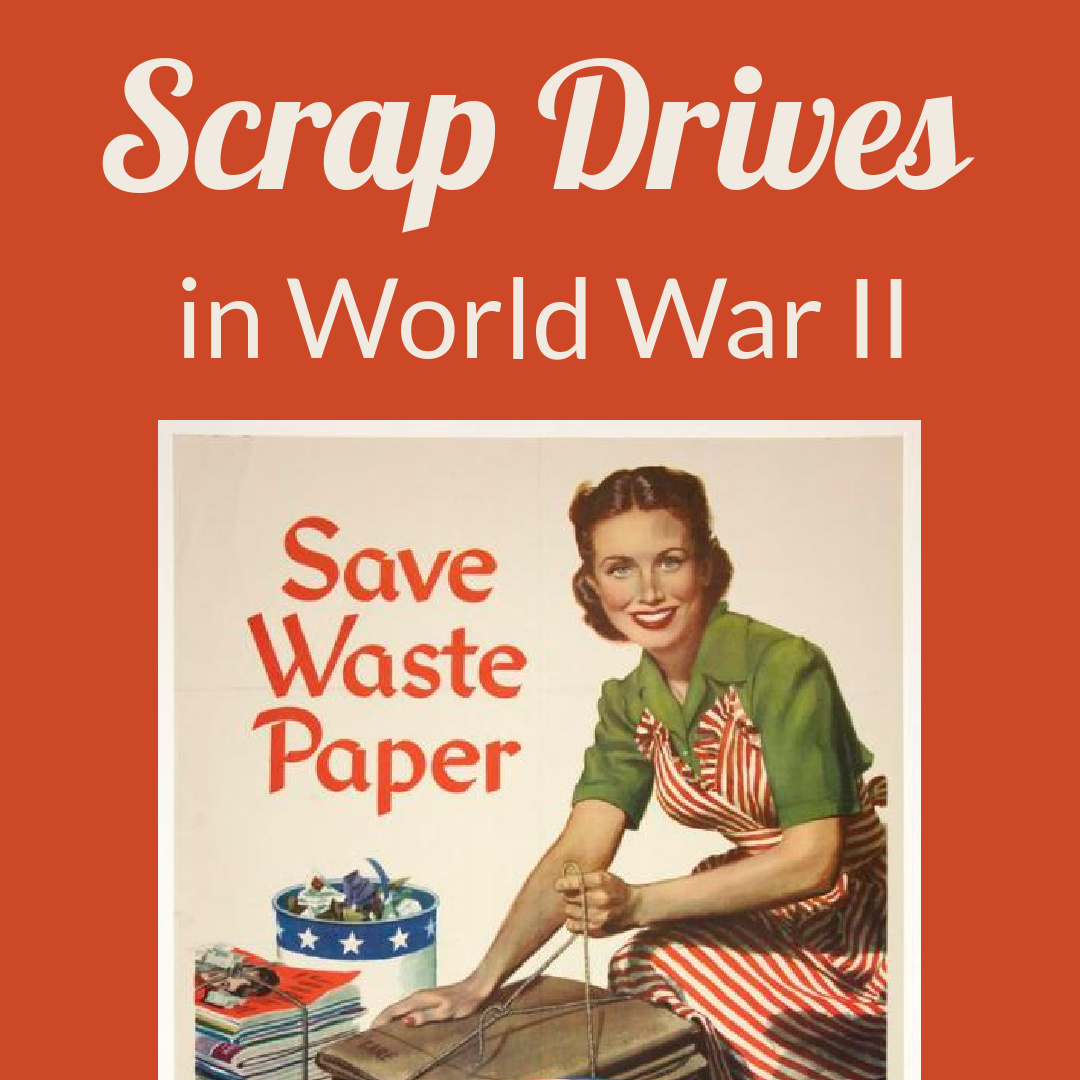Make It Do – Scrap Drives in World War II
Perhaps nothing represents the community-minded patriotism of the US Home Front in World War II better than the scrap drive. Enemy conquests cut off supplies of crucial raw materials such as tin and rubber, and the need for products made from these materials skyrocketed due to the war. Since useful materials often ended up in the trash can or languished unused in homes and on farms, the War Production Board encouraged scrap drives throughout the war. Scrap Metal Drives Metal shortages were critical (Make It Do – Metal Shortages in World War II). On January 10, 1942, the US launched the “Salvage for Victory” program (Read more on the National World War II Museum blog). Citizens scoured their homes, farms, and businesses for metal. Housewives donated pots and pans, farmers turned in farm equipment, and children even sacrificed their metal toys. Many people removed bumpers and fenders from their cars for the war effort. Communities melted down Civil War cannons and tore down wrought iron fences, sacrificing their history for their future. These drives were often great community events, with performers, speeches, and opportunities to throw your scrap metal at a bust of Hitler. Competitions were held to see which town, county, and state produced the most scrap, and the winners boasted of their feats. These drives had mixed results. Used aluminum was found to be useless for aircraft, but used tin, steel, and copper were easily melted down and reused. Tin Can Drives The use of tin packaging was greatly reduced during the war, due to the use of alternative packaging materials and to rationing of canned goods. However, consumer use of tin continued throughout the war, and … Continue reading Make It Do – Scrap Drives in World War II
